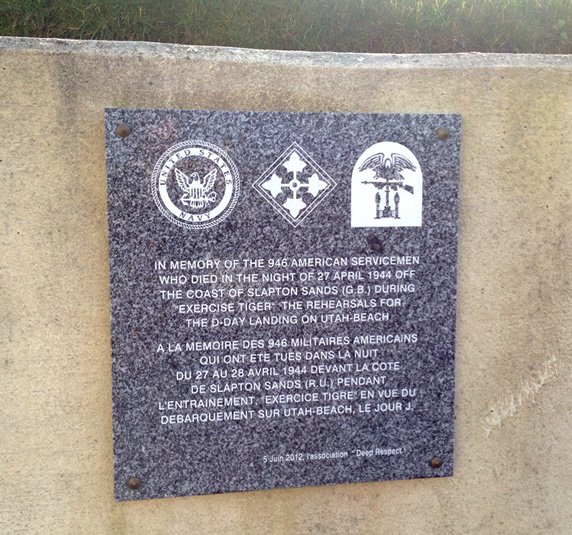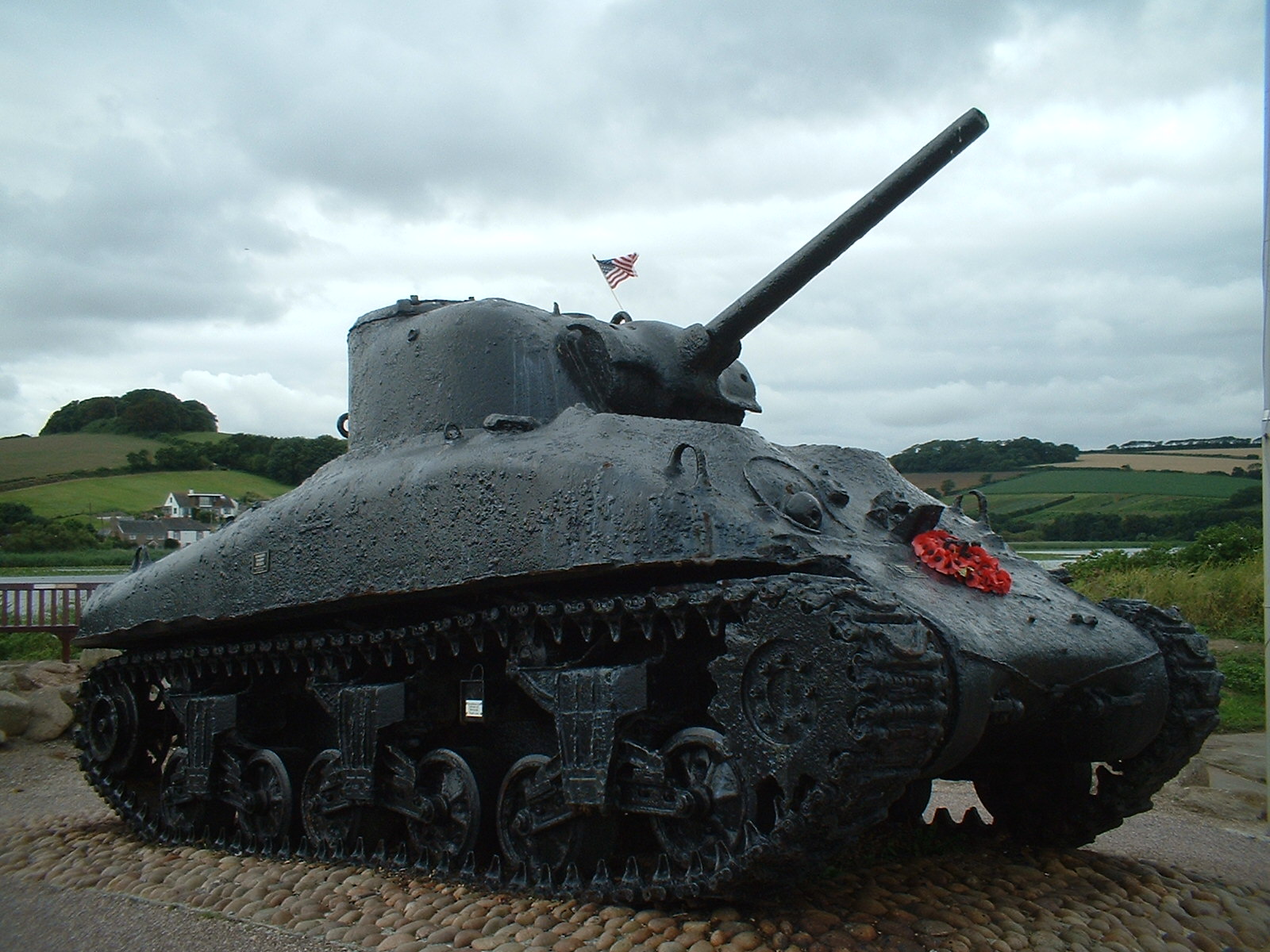Aside from the eventual execution, preparation and planning are perhaps two of the most important elements in any successful operation. Done thoroughly, we expect them to be the foundation of our actions, which lead to eventual success. However, as the 14th Dalai Lama said, “War is violence and violence is unpredictable”. This quote rang unfortunately true in Operation Tiger. A training exercise that was supposed to prepare U.S. troops for the D-Day invasion of Normandy resulted in the deaths of 946 American servicemen.
Slapton Sands
As D-Day drew close in 1943, the British Government established a training ground at Slapton Sands, Devon. American forces, named Force “U”, were set to land on Utah Beach.
Slapton Sands was chosen because of its similarity to Utah Beach and the fact it was deemed as a safe practicing space. The beach was gravel, which was followed by a track of land and a lake. If you look on a map, you’ll find Devon at the southern-western point of the United Kingdom. Utah Beach was around 300 kilometers southeast of Devon, so was as close as forces were going to get to the real thing.
However, you can’t simply stage a mock invasion without first alerting the town. There were around 3,000 local residents of Slapton evacuated. Before the operation, some of the people had never been outside the town in their lives.
American troops landing on Slapton Sands in England during rehearsals for the invasion of Normandy. By U.S. Signal Corps

Exercise Tiger
In December 1943, exercises began. Tiger was to be the largest exercise that took place in April and May 1944. This covered all parts of the invasion, which was to end in a beach landing at Slapton Sands.
Forces utilized nine tank landing ships (LST). This is the naval designation for vessels created in World War II to support amphibious operations by carrying vehicles, cargo, and landing troops onto rough shores. These LSTs housed 30,000 troops in preparation, ready for a live-firing exercise.
To support American Forces, the Royal Navy employed two destroyers, three Motor Torpedo Boats and two Motor Gun Boats. Destroyers patrolled the entrance to Lyme Bay, an area of the English Channel situated in the southwest of England between Start Bay in the west and Portland in the east. Motor Torpedo Boats surveyed the Cherbourg area, situated in north-western France. However, this was also an area where German E-Boats were based.
Bren Gun Carriers being loaded at Bone Harbour through the bow doors of the LST, HMS Bachaquero. By Parnall, C H (Lt), Royal Navy official photographer

The exercise’s primary phase concentrated on marshalling and embarkation drills, lasting from April 22 to 25. The first wave of assault troops boarded their transports and embarked in the evening of April 26. They were to simulate the Channel crossing by taking a longer route through Lyme Bay, so they would arrive at dawn on April 27.
Friendly Fire
On the morning of April 28, the first practice assault commenced. H-Hour (is the specific time at which an operation or exercise commences) was set for 7:30 am. Before this, there was to be a live firing exercise in order to get the troops used to D-Day’s chaotic atmosphere. The sounds, sights and smells of a naval bombardment were all important factors. Ground forces also planned to fire live rounds over incoming troops to further realize the grim mood.
General Dwight D. Eisenhower believed that live ammunition was an important factor, set to harden the troops to the harsh reality they would soon face. HMS Hawkins, a British heavy cruiser, planned to shell the beach with live ammunition from 6:30–7:30 am. This gave the beach masters 30 minutes to inspect the beach and ensure it was safe.
The tank was raised from the sea bed in 1984. It is a M4A1 Sherman tank lost in Exercise Tiger. Shahirshamsir at English Wikipedia
However, several of the landing ships that morning were delayed. The commanding officer, American Admiral Don P. Moon, chose to delay H-hour for 60 minutes, making the newer time 8:30. While this message was received by Hawkins, a number of the landing craft did not receive the message. This meant, unfortunately, troops were landing on the beach the same time the bombardment took place.
While there was a white line on the beach, signaling where they should not cross until the shelling finished, but troops were bombarded regardless.
Lyme Bay
The friendly fire incident was not the event to mar the day’s plans. On the day of the first practice assault, April 28, a convoy of follow-up troops were assaulted by nine German E-boats in Lyme Bay.
Only one of the two ships assigned to protect the convoy were present. The HMS Azalea led nine LSTs in a straight line formation, later criticized for presenting an easy target. The second ship, HMS Scimitar, had collided with an LST, which meant it had to leave the convoy due to structural damage. The fact that the LSTs and headquarters were operating on different frequencies, the American forces had no idea what had happened.
The E-boats sighted the convoy, consisting of eight LSTs with vehicles, and then attacked.
A memorial plaque to the U.S. army and navy servicemen killed, erected on a bunker wall at Utah Beach, Normandy. By Gravesg.ca

The LST-507 caught fire and was then abandoned. The LST-531 sank after suffering torpedo strikes. Though the LST-289 was set on fire, it did manage to reach shore. The LST-511 was damaged by friendly fire, while the remaining ships were able to get back to shore.
In total, 749 United States Army servicemen were killed and 198 United States Navy personnel. In detail on LST 13 marines were killed, LST 507 71 dead and LST 531 114 dead. Many other servicemen drowned, waiting to be rescued.
Aftermath
Obviously, the events of Exercise Tiger were an embarrassment. Add this to the possibility of information leaks, all survivors were sworn to secrecy by their superiors. Ten of the officers involved had BIGOT-level clearance; they knew about the plans for the D-Day Landings. The invasion was close to being called off until the bodies of these men were located.
Out of all the failed operation, some good emerged. Radio frequencies were standardized, there were better life vest training for landing troops, and there were news plans introduced for small craft to collect floating survivors on D-Day.
